I am preparing for the Virginia QSO Party and want to add an alternative 20 meter solution for my 43 foot vertical plus get better 15 and 10 meter coverage; I have been working plenty of 15 meter contacts with the 43 foot vertical so I know that band is open. Plus you never know if the sunspots might give us some 10 meter fun too 😉
So…
I have been eagerly absorbing all there is to know about the hex beam style of HF antennas.
If you are the least bit interested in building or buying your own hex beam a must read web site is the G3TXQ study of the hex beam…
One word that comes to mind is “WOW” what a great collection of tests, simulations and other thoughts about the hex beam.
My favorite feature of the site is the availability of an EZNEC simulation file for the G3TXQ of the five band broadband hex beam.
I eagerly downloaded the EZNEC file and, because I have the + version of the software with a higher segment limit, changed all the wires to a consistent and even segmentation rather than keeping the tapering feature. I now have 1223 segments in the mode. It takes a lot longer to do simulations, but is no big deal.
What I am doing with this beam is for another post. The question I hear often on the hexbeam Yahoo forum is concerning using the five band hex on 6 meters.
The focus of concern comes from the third harmonic of the 17 meter element which is close to the 6 meter band.
Indeed running a SWR plot on the stock five band hex beam between 48 and 56 MHz yields…

Hmmm, this is not a fantastic SWR, but sure suggests something in the five band broadband hex beam is absorbing the energy. Let’s see where the currents are…

Sure enough, the 17 meter element has the most current suggesting it is providing the majority of the absorption at 51 MHz. If you look closely, only the driven element has lots of current while the reflector seems quiet. If you look closer still you can imaging the 17 meter M element acting a bit like a folded Extended Zepp antenna. An examination of current phase indeed confirms that center current peak is of opposite polarity than the current peaks at the ends.
So this is all very interesting. The stock G3TXQ Broadband Hex Beam sort of works on 6 meters. Even if you can live with the high SWRs, is the pattern useful? The next figure shows the Elevation pattern of the five band hex beam up about 20 feet above the same ground as defined in the original G3TXQ file…

Hmmm, not too shabby. Remember to not get too excited with gain figures of 8 dBi when simulating antennas above real ground; There is often a gain increase due to ground for any antenna including simple dipoles. The point here is this HF antenna seems to offer some gain at 6 meters. Here is the Azimuth plot of the 12 degree elevation…

The front to back and front to side ratio is a bit weak at 5 dB, but this is certainly a directional antenna at 51 MHz.
My ultimate goal is to build a contest version of the broadband hex beam for just 20, 15 and 10 meters. After I deleted the 17 and 12 meter wires from the model, I ran SWR again to see if things change at 51 MHz…

They sure did. The 12 and/or the 17 meter elements were certainly contributing to the dip in SWR in the 6 meter band. It is pretty obvious the 17 meter wires were operating at the third harmonic so I rule the 12 meter wires are not contributing to 6 meter operation.
So… what does the mean?
Two things.
- If you have the five band 20-10 meter G3TXQ Broadband Hex Beam antenna, you may well have a workable 6 meter antenna too. If your rig has 6 meters on its HF output and a built-in auto-tuner, press TUNE at 51 MHz and see what you get. You may well have a free 6 meter beam ready for use.
- Adding an additional 6 meter set of wires to the existing 5 band HF G3TXQ Broadband Hex Beam antenna, may be a waste of time since the 17 meter element is competing for some of the energy at 50+MHz.
The second point may surprise many folks who have invested in adding a 6 meter element to their five band hex beam. They say “it works fine.” That’s great, but it certainly is worth knowing why. In a future post we will simulate the five band with the extra 6 meter wires and see what we find.
Given the above facts, I will never add a 6 meter add on to the current G3TXQ Broadband Hex Beam design as it is clearly competing with the 17 meter antenna.
However, remember, I am building a three band hex beam with 20, 15 and 10 meters. This antenna won’t have the conflicting third harmonic issues caused by the 17 meter portion. I will explore the reasonableness of add 6 meters to my three band configuration in a future post.
Conclusion
For those of you with the 5 band design, you may well have a workable 6 meter beam an autotune button away from use right now. Give it a try and let us know the results by adding comments to this post.
There is an obvious conflict between an added 6m wire set and the existing 17m wire set which may create a complicated situation which looks “good enough,” but may be not what you expect. I would love to post your far-field 6 meter measurements of relative gain, front-back and front-side ratios. Please, no comments about how the hex beam is impossible to simulate.
Kudos
I can’t thank G3TXQ enough for his extensive research into the hex beam antenna and his Broadband alternative. I very much look forward to building my contest version leveraging his excellent work.
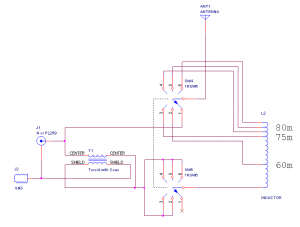
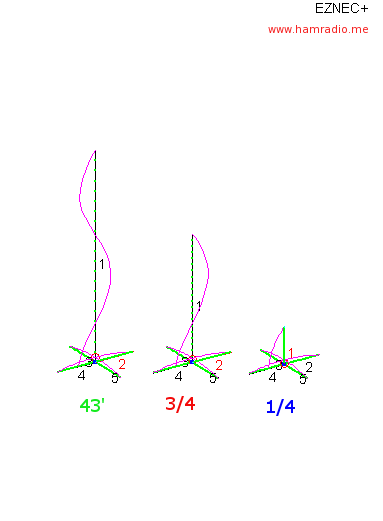
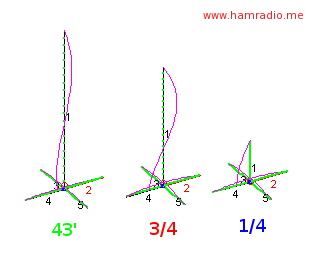
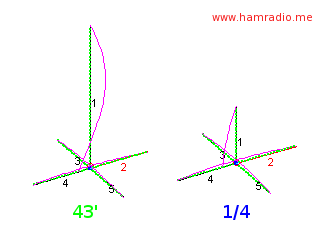
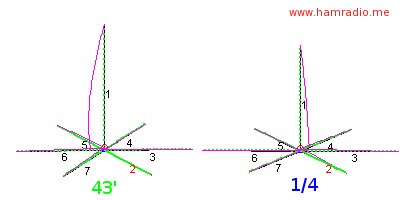

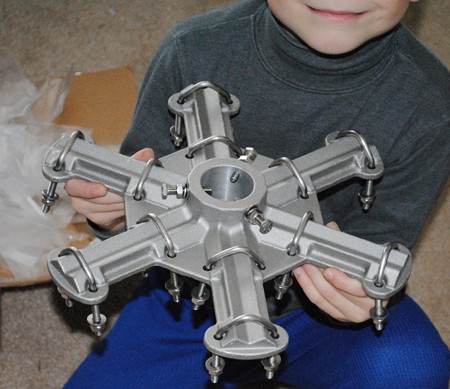

Hello! Thanks for your ineteresting work on the Hex beam. I have built myself a 4 band version – 20, 17, 15 and 10m bands. They are well spaced out so as to try and provide mono band performance. The surprise for me was how well it works on the 6m band. The swr is less than 3:1 and as you say the auto tuner on my FT450d tunes it nicely. I have had many contacts on 6m and consider I have actually got a 5 band antenna even though I only have 4 sets of wires. Kind Regards Jess G8IYE
Sure you can tune the 17m element for 6m but then you have to contend with the coax losses in doing so. Yes a 6m element on a Hex will interact with the 17 but that interaction occurs at 54mhz which is the third harmonic of 18mHz. Most 6m operations on UBS are well below that interaction point on the band.
What about some research on 6m with the nanovna? Maybe a fixed transformer or LC network would fix the SWR fine enough for 6 meter work…